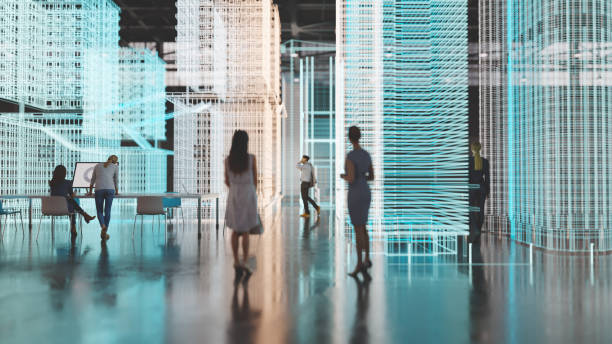Holographic Installations: Redefining Spatial Art
In the ever-evolving landscape of contemporary art, holographic installations have emerged as a groundbreaking medium, blurring the lines between reality and illusion. This cutting-edge form of artistic expression combines advanced technology with creative vision, transforming spaces and challenging our perceptions of dimensionality. As artists and technologists collaborate to push the boundaries of what's possible, holographic art is captivating audiences worldwide and redefining the very essence of spatial art.

From Science to Artistic Medium
The transition of holography from scientific curiosity to artistic medium began in the 1970s. Artists like Margaret Benyon and Rudie Berkhout were among the first to recognize the creative potential of this technology. They experimented with holographic techniques to create ethereal, three-dimensional images that seemed to float in space. These early works, while limited by the technology of the time, laid the foundation for the immersive installations we see today.
The Digital Revolution and Holographic Art
The advent of digital technology in the late 20th and early 21st centuries revolutionized holographic art. Computer-generated imagery (CGI) and advanced projection systems allowed artists to create more complex and interactive holographic installations. Artists like James Turrell and Olafur Eliasson began incorporating holographic elements into their large-scale light installations, blurring the lines between physical and virtual spaces.
Contemporary Holographic Installations
Today’s holographic installations are a far cry from the static holograms of the past. Artists are creating immersive environments that respond to viewer movement, incorporate sound and other sensory elements, and even interact with live performers. Japanese art collective teamLab, for instance, has gained international acclaim for their digital art installations that transform entire rooms into dynamic, holographic landscapes.
The Technology Behind the Art
The creation of modern holographic installations involves a complex interplay of technologies. High-powered laser projectors, motion sensors, and sophisticated software work in tandem to create the illusion of three-dimensional objects floating in space. Some installations use transparent screens or specialized mist as projection surfaces, while others employ advanced techniques like volumetric displays to create true 3D images visible from multiple angles without the need for special glasses.
Challenges and Ethical Considerations
As with any emerging technology, holographic art raises new challenges and ethical questions. The high cost and technical complexity of creating large-scale holographic installations can limit accessibility, potentially creating a divide between artists who can afford the technology and those who cannot. Additionally, the immersive nature of these installations blurs the line between reality and illusion, prompting discussions about the psychological impact on viewers and the potential for misuse in advertising or propaganda.
The Future of Holographic Art
The future of holographic installations looks bright, with ongoing technological advancements promising even more spectacular and interactive experiences. Researchers are developing new materials and projection techniques that could make holographic displays more affordable and easier to implement. Some artists are exploring the integration of artificial intelligence to create evolving, self-generating holographic artworks that change over time.
Impact on Traditional Art Forms
Holographic installations are not just a standalone art form; they’re also influencing more traditional mediums. Painters and sculptors are incorporating holographic elements into their works, creating hybrid pieces that challenge our understanding of dimensionality. Museums and galleries are experimenting with holographic displays to present historical artifacts or fragile artworks in new, interactive ways.
Conclusion
Holographic installations represent a fascinating convergence of art, science, and technology. As this medium continues to evolve, it promises to reshape our understanding of spatial art and push the boundaries of creative expression. While challenges remain, the potential for holographic art to create truly immersive, transformative experiences is undeniable. As we look to the future, holographic installations stand poised to play a pivotal role in the next chapter of artistic innovation, inviting us to step into worlds limited only by imagination.





